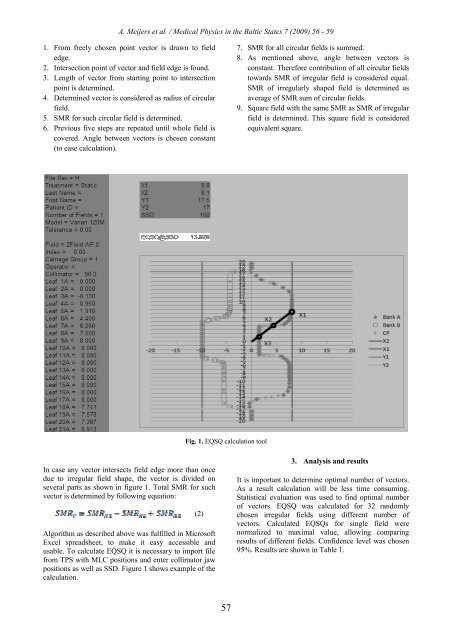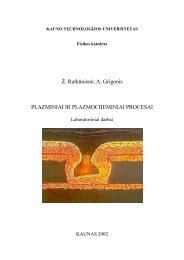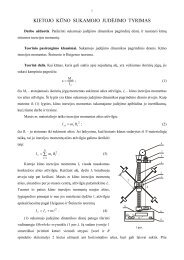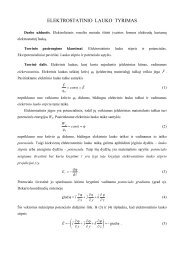PROCEEDINGS OF THE 7 INTERNATIONAL ... - Fizika
PROCEEDINGS OF THE 7 INTERNATIONAL ... - Fizika
PROCEEDINGS OF THE 7 INTERNATIONAL ... - Fizika
Create successful ePaper yourself
Turn your PDF publications into a flip-book with our unique Google optimized e-Paper software.
A. Meijers et al. / Medical Physics in the Baltic States 7 (2009) 56 - 59<br />
1. From freely chosen point vector is drawn to field<br />
edge.<br />
2. Intersection point of vector and field edge is found.<br />
3. Length of vector from starting point to intersection<br />
point is determined.<br />
4. Determined vector is considered as radius of circular<br />
field.<br />
5. SMR for such circular field is determined.<br />
6. Previous five steps are repeated until whole field is<br />
covered. Angle between vectors is chosen constant<br />
(to ease calculation).<br />
In case any vector intersects field edge more than once<br />
due to irregular field shape, the vector is divided on<br />
several parts as shown in figure 1. Total SMR for such<br />
vector is determined by following equation:<br />
Fig. 1. EQSQ calculation tool<br />
(2)<br />
Algorithm as described above was fulfilled in Microsoft<br />
Excel spreadsheet, to make it easy accessible and<br />
usable. To calculate EQSQ it is necessary to import file<br />
from TPS with MLC positions and enter collimator jaw<br />
positions as well as SSD. Figure 1 shows example of the<br />
calculation.<br />
57<br />
7. SMR for all circular fields is summed.<br />
8. As mentioned above, angle between vectors is<br />
constant. Therefore contribution of all circular fields<br />
towards SMR of irregular field is considered equal.<br />
SMR of irregularly shaped field is determined as<br />
average of SMR sum of circular fields.<br />
9. Square field with the same SMR as SMR of irregular<br />
field is determined. This square field is considered<br />
equivalent square.<br />
3. Analysis and results<br />
It is important to determine optimal number of vectors.<br />
As a result calculation will be less time consuming.<br />
Statistical evaluation was used to find optimal number<br />
of vectors. EQSQ was calculated for 32 randomly<br />
chosen irregular fields using different number of<br />
vectors. Calculated EQSQs for single field were<br />
normalized to maximal value, allowing comparing<br />
results of different fields. Confidence level was chosen<br />
95%. Results are shown in Table 1.








